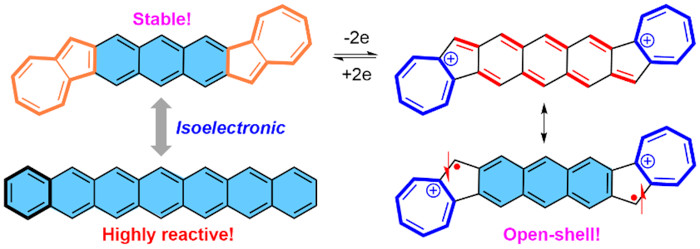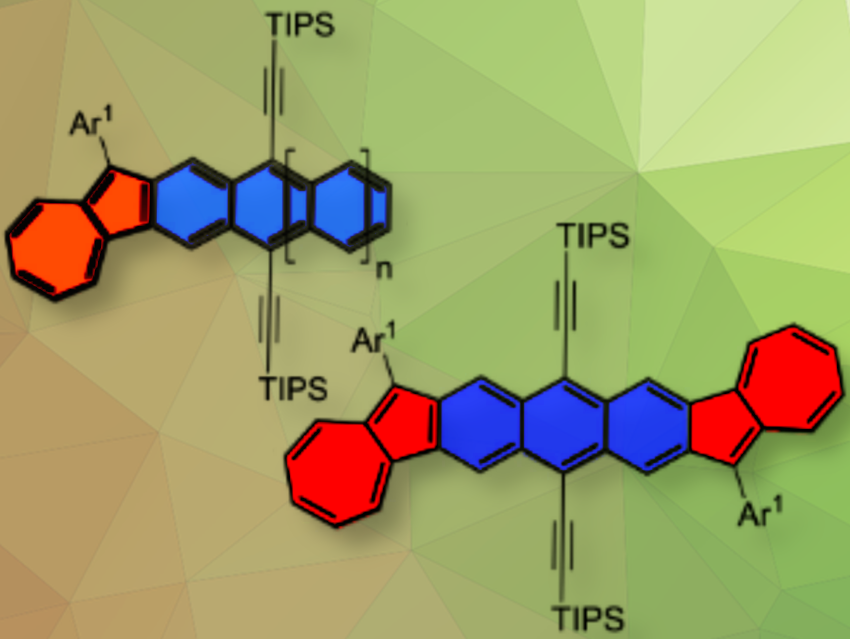Benzenoid molecules such as acenes are promising semiconducting materials for organic electronics. However, longer acenes that possess desirable electronic properties are reactive and difficult to work with. Acene structures can be replaced by non-benzenoid five- and seven-membered rings to form new π-systems that are isoelectronic to benzenoid acenes, but with enhanced stability and different electronic properties.
Chunyan Chi, National University of Singapore and colleagues have synthesized a series of azulene-fused acenes consisting of five to seven rings in total, of which one to two azulene units are embedded (pictured above). Azulene is a bicyclic system that consists of one cyclopentadiene and one cycloheptatriene ring. The researchers prepared the chemicals by aldol condensation of azulene and acene derivatives and subsequent nucleophilic addition on the ketone formed, followed by a dehydration reaction as the last step.
The series of azulene-fused acenes are isoelectronic to their acene counterparts. The molecules possess a localized aromatic backbone comprising all the six- and five-membered rings, while the seven-membered ring remains non-aromatic. The team found that all three molecules display the properties of both azulene and acenes, and they are much more stable than their respective acene counterparts.
Dications were formed by chemical oxidation. One of them showed an open-shell diradical character (pictured below). It can be explained by recovery of aromaticity of an 2,6-anthraquinodimethane unit annulated with two aromatic tropylium rings.

- Azulene‐Fused Acenes,
Albert Ong, Tao Tao, Qing Jiang, Yi Han, Yaping Ou, Kuo-Wei Huang, Chunyan Chi,
Angew. Chem. Int. Ed. 2022.
https://doi.org/10.1002/anie.202209286




